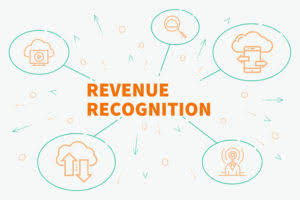- Tüm Ürünler
Mutfak
Oturma Odası
Yatak Odası
Giriş Mobilyası
Banyo
Çalışma Odası
Aksesuarlar
-
 Chicago Şifonyer
Chicago Şifonyer
₺52,364.00₺41,901.60
-
- Yaşam Tarzı
eBill Explained: A Comprehensive Guide to Digital Billing

Online portals may also offer features such as automatic email notifications and the ability to view previous invoices and payment history. Mobile delivery methods can provide added convenience and accessibility for customers who are frequently on the go. It involves sending invoices and bills to customers via email, which they can then pay using a secure online payment portal or by mailing a physical check.
- E-billing, or electronic billing, is the process of generating and delivering invoices to customers electronically, rather than in a physical paper format.
- Globally, the general requirements for eBilling include the authenticity of origin, content integrity, and document readability over time.
- It involves the use of technology such as email, online portals, and electronic payment systems to streamline the billing process and reduce paper waste.
- But electronic billing systems are in no way perfected or without meaningful variety.
- While electronic billing can include invoicing, electronic invoicing does not encompass all aspects of electronic billing.
- Please note that if you are approved, your new delimiting date will be calculated based upon when you apply.
Signs It’s Time to Automate Your AP Processes
These regulations establish the technical and legal requirements to ensure the validity of electronic invoices and their acceptance by tax authorities. Additionally, it streamlines the workflow, allowing for faster and more efficient invoice management. Processing time is reduced, thus legal e-billing improving the payment cycle and liquidity of companies. These benefits go beyond simple digitalization, encompassing improvements in efficiency, security, and sustainability.

Best Practices for Implementing Service Provider Management

If you’re always sending invoices to your customers manually, you are cutting downtime and resources that you could’ve allocated to other important aspects of your business. With recurring billing software like ReliaBills, you can save as much time and money on your invoicing. E-billing software enables Accounts Receivable departments to become far more efficient. Removing process inefficiencies saves time and money, as well as ensuring more accurate and faster delivery of invoices to customers for prompt payment. A well deployed electronic billing system is more than just an operational upgrade, it’s a strategic advantage. While it’s still a useful method for some small businesses, eInvoicing lacks control and tracking – two features that electronic billing systems offer.

Cost Savings
- With e-billing software, businesses can streamline the entire billing process, from invoice creation to payment reconciliation and record-keeping.
- In Spain, eBilling has been driven by various regulations aimed at modernizing administrative and fiscal processes, improving transparency, and combating fraud.
- Electronic billing (e-Billing) eliminates paper invoices and replaces them with digital versions, ramping up business and system efficiency for the supplier and customer.
- This approach not only facilitates the issuance and receipt of invoices between different countries but also helps to minimize errors and maintain consistency in financial data.
- If you use billing software, you can use it to notify the customer of the eBill delivery or remind them of the payment date.
Not all electronic billing systems are the same, and not all offer the same level of features. It’s up to businesses to determine which features matter most to them and will best suit their billing and accounts receivable/accounts payable processes. Many net sales businesses love the use of e-billing because it streamlines their accounting process and eliminates stress at the end of each billing cycle. Quality accounting software allows businesses to eliminate manual entry of paid bills into a digital accounting system. When it’s all handled through the finance and accounting software, that software can automatically receive an e-bill, process it, add it to accounts payable, then pay it without the need for much manual work.
Cash Application
All the invoices and bills are generated digitally by software applications and computers. Not only e-billing Bookstime includes the generation of e-bills, but also the system that enables clients to pay for these bills digitally (electronically). E-billing is the process by which electronic bills are generated and delivered to customers, reminders sent, and payments collected.
Even when migrating your other operational processes to digital software, your invoicing and payment processing system may still rely on outdated methods. There are many SaaS solutions created specifically for the billing and payment process. It’s no secret companies, especially accounting departments, have become the top targets for cyber criminals trying to intercept payments through phishing. Leveraging a software such as Eftsure ensures all account numbers are fact-checked in minutes before payments are processed, to ensure you pay the right people every time. Although the AP team doesn’t send invoices or process incoming payments, it sits on the other side of the billing process.
The Top 3 Benefits of an Electronic Billing System for Government Organizations

With a clear and extensive record of payment histories, your organization can detect when patterns occur in specific demographics. This detection allows your organization to plan and take preventative measures to ensure a steady cash flow into your organization. Sending a bill electronically increases the likelihood that people will see them. Notifications through email or texts appear on your residents’ mobile devices.




